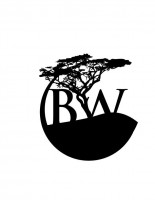Today, I’m packing. After two years in the works, we’re kicking off the Elephant Ivory Project in earnest on Sunday morning, when Andy Maser and I fly to Kinshasa–the capital of the Democratic Republic of Congo (DRC)–with a case of collection vials and the goal of saving a species. Here’s the back story:
A couple of years ago, at a meeting for National Geographic Explorers in Seattle, Washington, I met Dr. Samuel Wasser, Director of the Center for Conservation Biology at the University of Washington and an expert on African elephants. For a decade now, Wasser has been working on a project that compares DNA sampled from seized elephant ivory to reference DNA sampled from wild elephant scat in Africa. (Just a reminder: the trade of elephant ivory has been banned internationally since 1989.) With this information, Wasser is able to determine where elephants live, based on similarities between the two samples. Individual elephants from the same region have many similar genes and poachers tend to target elephant herds within specific areas repeatedly, which is why Wasser’s study is such a valuable tool for conservation. The information allows willing governments and NGOs to direct anti-poaching units to threatened herds, thus stopping the trade before the animals are killed.
At least, that’s how it works in theory. Last year was one of the worst in recent history for elephant poaching. Nearly six percent of Africa’s 450,000 wild elephants were killed in 2010, and the populations in the DRC are down to less than ten percent of what they were historically. If poaching continues at this rate, these animals will be extinct outside of protected areas in the next couple of decades.
Andy and I got involved with Wasser to stop that from happening. He’s sampled elephant scat across most of the elephant’s range in Africa, but there are a small handful of regions in the eastern DRC that haven’t been sampled for reasons obvious to anybody familiar with Central African politics. For the better part of the past 20 years, the eastern DRC was home to the most violent conflict since World War II. Despite the signing of a peace accord in 2008, more than 2 million displaced peoples still live in camps dispersed throughout the country. The situation has improved greatly, but stability remains a long way off. In fact, a militia attacked the DRC’s President Joseph Kabila, only weeks ago on February 11th.
“It’s a war-torn nation. People are raping and killing women and children and we’re asking them to control their poaching?” Wasser says. “It’s complicated. But that doesn’t mean we should stop.”
Over the next six weeks, Andy and I will be sampling elephant feces in four different locations. Cosma Wilungula Balongelwa, the Administrative Director General of the ICCN (DRC’s wildlife management agency), and John and Teresa Hart, two conservationists that have been working in the jungles of the DRC for 30 years, have agreed to help us. To reach the locations of these unsampled herds, we’ll be taking pirogues on the Congo River and its tributaries, riding motorcycles through recent battlefields, and collaborating with local tribes in some of the most remote jungles of Africa. Thanks to Spot Messenger, you can follow our progress on the map at our website, our tweets at @EPfilmsTV and @amaser, and our blogs here on Bush Warriors. Wish us luck!
–Kyle Dickman and Trip Jennings
Click here to learn more about Bush Warriors’ new feature, “Live from the Congo”!
![]()
Project Sponsors:











why can’t rhinos and elephant be tranquilized and have their ivory removed by the ‘good guys?’
yes, drugging the animals has some risk but the alternative is leaving an animal intact and having poachers attracted to it. surely that is better.
i just don’t understand why this is not being done all over africa?
yes there are lots of animals to de-tusk but so what? it would be doing something positive to stop poachers.